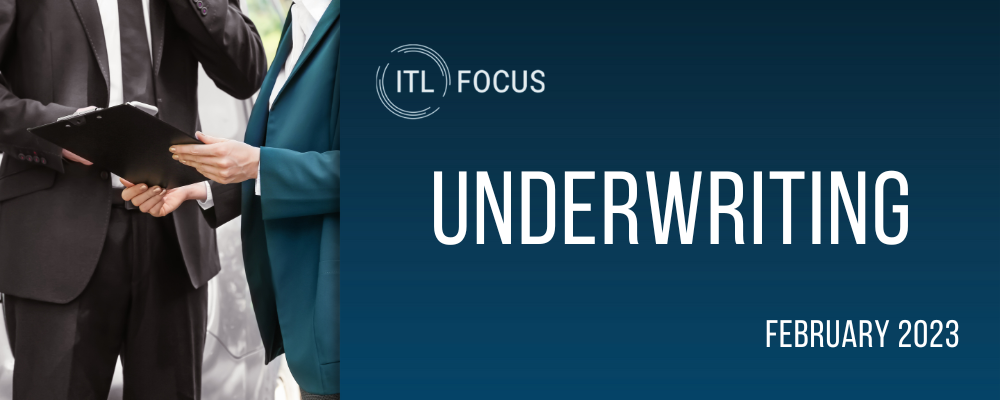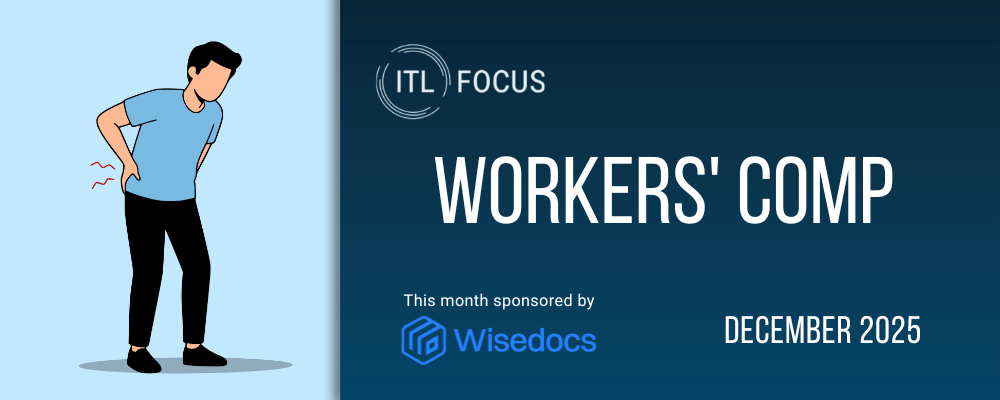|
The thought that keeps rattling around in my head as I think about underwriting these days is: How can you make accurate predictions about risk based on historical experience... when the world has decided to throw so much of that experience out the window?
COVID-19 changed all sorts of assumptions about life expectancy, at least in the short run and perhaps in the long run; we just don't know yet. The pandemic also reset our patterns of work, changing the risks associated with buildings and with those who work in offices and factories -- or maybe not, as more companies insist on a return to the office.
Inflation came out of nowhere for the first time in decades and made just about every sort of claim more expensive, especially in auto, where supply chain issues sent car prices through the roof. Now, inflation is subsiding... we think... but how fast?
And don't get me started on the Russian invasion of Ukraine, a stunner that not only created tons of business risks but that greatly stepped up the general geopolitical uncertainty, including on the possibility that China will invade Taiwan.
I wish I had an answer for underwriters. Instead, as usual, I have a story. It's one that was told to me in 2000 by Gary Loveman, a Harvard Business School professor who rather unexpectedly found himself being asked to be COO at Harrah's and who reinvented loyalty programs, initially for Harrah's and eventually for the whole gambling industry.
The analogy is far from perfect. Regulations will prevent insurers from implementing many of the ideas. That's why I used the word "dream" in the headline, rather than offering a concrete proposal. But there may be aspects of his ideas that can help with underwriting -- and it's a good story....
Loveman was a popular but untenured professor at HBS, doing some consulting on the side, when he met the CEO of Harrah's at a continuing education program that Harvard put on. Loveman later sent him an unsolicited letter with some ideas about how Harrah's could break out in what had become a commodity market, where every casino's games were basically the same as everyone else's. Next thing he knew, in 1998, the CEO had offered Loveman the job of COO. Loveman, who had never managed more than his admin and some research assistants, was going to be managing 15 casinos with more than 10,000 hotel rooms and more than 35,000 employees.
Among the many smart things he did, he reversed the sequence of the loyalty program. Rather than wait for customers to earn loyalty points, he used technology to guess what kind of customer someone would be based on the first interaction, or at most the first few, and started treating them as part of that tier. If he was wrong, he had only cost himself the occasional steak or free hotel room (that would have been unoccupied anyway). But if he was right -- and he was right a lot -- he had a good chance of winning the loyalty of someone before they wandered down the street to another casino.
I had personally seen the attraction of that sort of loyalty-on-the-come approach. When I left the Wall Street Journal to become a partner at a consulting firm, Diamond, a few years before, I was suddenly going to be traveling a ton and didn't want to have to wait a year for the airlines to start rewarding me. I wrote letters to the major airlines asking for status and promising that I'd spend a bunch of money with them if they agreed. American and United did, on the understanding that they'd check up on me after a few months, and I spent thousands of dollars a month with them for years.
So, that loyalty inversion idea stuck with me, and it would do a lot to improve underwriting -- if regulators would allow it. Imagine if you could shorten the duration of policies or make the premium variable, so that you weren't having to make a one-year prediction on all those fast-changing variables. Instead, you'd be issuing a one- or two-month policy for, say, an auto based on your best understanding on general inflation, on the prices of used cars, on general driving trends and even on the particular behavior of the insured, as measured by a telematics device.
You could handle far more uncertainty and surprises because you'd learn on the fly, as Loveman and Harrah's did, while minimizing the cost of your mistakes.
No, regulators won't allow the sort of flexibility that would be ideal for underwriters. Nor should they. Regulators need to protect consumers, and allowing for such variability in premiums would create the potential for all sorts of mischief by insurers, which could lure people with low initial offers and then quickly jack up rates. Regulators want to provide customers with as much certainty as possible about coverage and rates.
But I do think the notion of underwriting by prediction and experimentation is still a powerful idea and could point underwriting in some useful directions. Let's call it a dream.
Cheers,
Paul
P.S. In any case, you might want to look at Loveman's story just for the sophistication of the data analysis. He learned, for instance, that while industry consensus was about courting the high rollers (the "whales"), Harrah's best customers were actually a group of decidedly low rollers who dropped in for an hour or two at a time, often to relax on their way home from work. He also demonstrated the power of what has come to be known as "omni-channel." Staff often recognized regular customers at their casino and provided special treatment but had no way to recognize good customers from a different Harrah's property -- until Loveman set up a program that captured and shared data from all the games, all the restaurants, all the bars, etc. from the group's 15 casinos, plus the dozens more they went on to acquire before Loveman stepped down in 2015.
If you're interested in learning more, you might check out this piece Loveman wrote for Harvard Business Review or this piece about him produced by Stanford Business School.
|






















